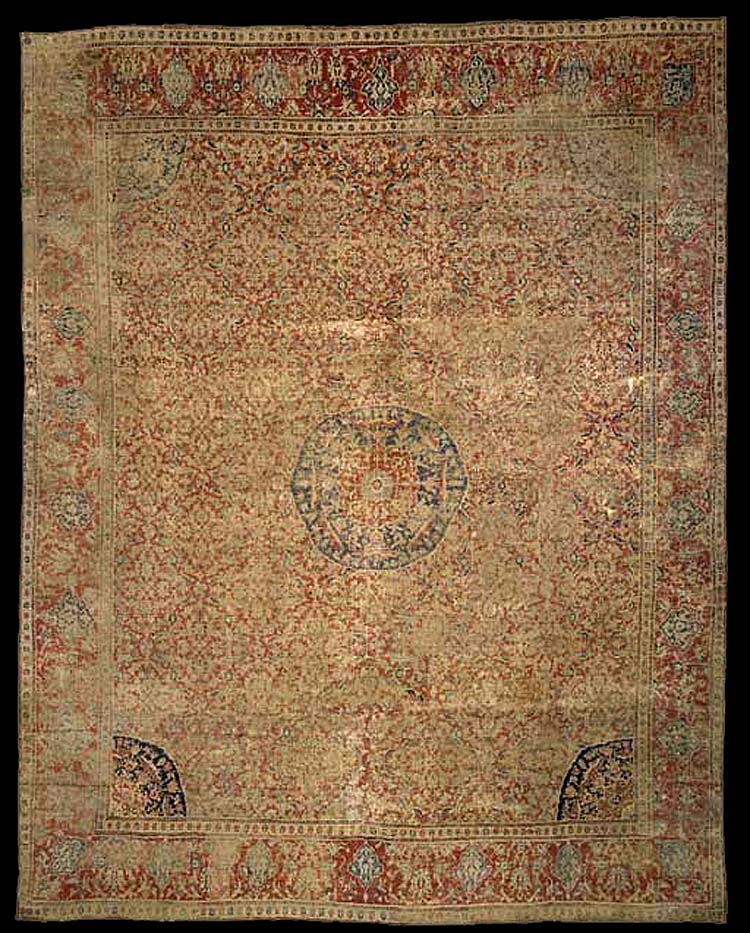|
A LARGE CAIRENE CARPET
OTTOMAN EGYPT, MID 16TH CENTURY
Price Realized £9,000 ($16,830)
Sale Information
SALE 7264 —
ORIENTAL RUGS AND CARPETS
9 October 2006
London, King Street
LOT NOTES
Lot Description
A LARGE CAIRENE CARPET
OTTOMAN EGYPT, MID 16TH CENTURY
Overall wear, extensively repiled, fragmented, scattered holes, backed
25ft.2in. x 20ft. (767cm. x 609cm.)
Lot Notes
The emergence of 'Cairene' carpets from Mamluk carpets and their development
has been the subject of considerable study. The best introduction is still
E. Kuhnel and L. Bellinger, Cairene Rugs and Those Technically Related,
Washington D.C., 1957, pp.41-64. It is generally accepted today that the
earliest examples of the group were made in Cairo, adapting the Ottoman
design aesthetic with traditional Mamluk materials and techniques. The very
earliest examples only used the three-colour Mamluk palette (see for example
lot 99 in The Bernheimer Family Collection of Carpets, sold in these Rooms,
14th February 1996), but by the mid-16th century a number of other colours
had been introduced.
This combination of materials and techniques together with design, dates
this group to after the 1517 Ottoman conquest, their production continuing
into the 17th century. The field design of the present carpet is typical of
one sub-group where the medallion and spandrels are superimposed on an
endless repeating field of palmettes and saz leaves. Serare Yetkin discusses
this in her study on Turkish carpets (see S. Yetkin, Historical Turkish
Carpets, Istanbul, 1981, pp.101-127; also W. Denny, The Origin and
Development of Ottoman Court Carpets, Oriental Carpet and Textile Studies
II, London, 1986, pp.243-259). |

